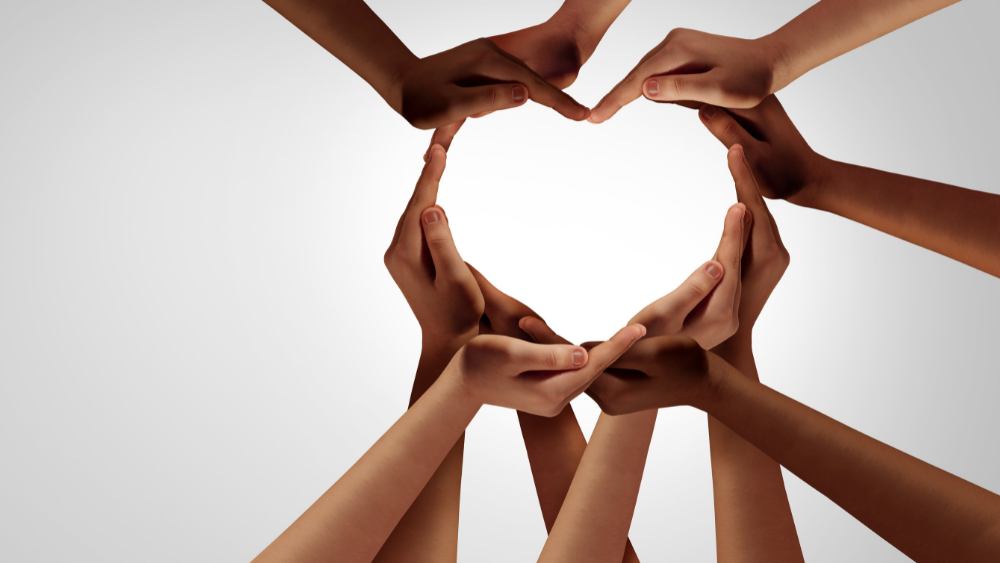Insights
INSIGHTS
All Topics
My Account
Showcasing diversity through imagery
14 Sep 2021by Joe Lepper
Charities are increasingly looking to ensure their imagery reflects ethical values of diversity, equality and inclusion whilst adding authenticity to their communications
Charities have had to admit to some uncomfortable truths about their own attitudes to diversity and race in recent years.
Many have been forced to conclude that systemic racism is, sadly, rife within their organisation. This is not just in terms of recruitment, with white people too often dominating board rooms, but also in how charities use content.
Charities are asking themselves difficult questions about their marketing, promotion, and imagery. Are the images used truly representative of society and their own communities? Does the imagery convey charities’ aspirations around diversity?
Charities addressing racism within their own organisation
Two years ago, the charity sector was rocked by the launch of the #CharitySoWhite campaign. This started as a hashtag on Twitter for charity sector workers from minority communities to share their experiences of institutional racism and discrimination in the sector.
Since then the campaign has heightened significantly with a raft of charities taking on board the campaign’s messaging around diversity. This has seen many carry out independent reviews, appoint diversity lead officers, and take action to ensure their branding, imagery, and communication is tailored to a wide range of audiences.
Charities that have pledged action to improve diversity include children’s charity Barnardo’s, which launched an independent investigation in 2021 finding “evidence of racist and discriminatory behaviour” within its fundraising department.
Meanwhile, sector body the National Council for Voluntary Organisations (NCVO) is taking action to address its existence as a “structurally racist organisation”.
Furthermore, according to sector body ACEVO, fewer than 6% of charity leaders are from Black Asian and Ethnic Minority (BAME) backgrounds, compared to 14% of the population.
Using imagery to address colonial and slavery links
A specific group of voluntary sector organisations looking to show their commitment to equality and anti-racism are long-running charities, where their history dates back to philanthropy funded by colonialism and slavery.
This includes education charity Portal Trust, which until April 2021 was called Sir John Cass’s Foundation.
Cass was an English slave trader during the 17th and 18th century and his image has been removed from the charity’s communications.
Instead, new branding has been revealed that, according to Portal Trust’s chief executive Richard Foley, “allows us to continue...with renewed vigour without reference to our founder’s historical connections with the trans-Atlantic slave trade”.
“We’re excited to announce our brand has evolved with a fresh new feel and strapline, that we believe reflects our vision, core proposition and most importantly our valued community.”
Another organisation tackling its colonial and slavery links through a change of imagery is Bristol Beacon, the arts charity and venue that was formerly known as Colston Hall, named after 17th century slave trader Edward Colston.
Tackling White Saviourism
International aid charities in particular need to ensure their imagery avoids white saviourism, where predominantly white Northern hemisphere charity workers are portrayed as saviours of communities in developing countries.
A report by the charity Peace Direct into the aid sector’s links with colonialism includes a focus on the importance of imagery in tackling racism. It urges charities to avoid presenting Africa “as a land of endless struggle, dependent on the West to save it”.
“The harm such images inflict cannot be overstated: they dehumanise and exotify Black, Brown and Indigenous people in crisis-affected regions,” says Peace Direct.
Importance of representing diverse audiences
Imagery is vital to ensuring a charity is conveying messages to a wide range of audiences, based on gender, sexual orientation, body types and ethnicity.
Imagery representing diversity ensures no one is being left out and is especially important for charities supporting minority communities.
In terms of race and ethnicity, imagery should not be tokenistic, with one person of colour featured among dozens of white people. There should be a range of people of different skin colours, cultural traditions, and ethnic backgrounds featured, including people of mixed race and under-represented groups.
Avoid stereotyping
Avoid stereotyping, particularly with gender. Conventionally certain roles and jobs depicted in images are seen as masculine and feminine. Imagery featuring people of different genders in a variety of roles can add authenticity to communication.
The same rules apply to people of different ages. According to YouGov survey, around eight out of ten people over the age of 50 don’t believe they are accurately portrayed in advertising. Featuring older people in campaigns in everyday roles, as volunteers, members of staff or beneficiaries, can help charities be more accurate in reflecting society.
Steering clear of stereotyping is also key when portraying LGBTQ+ people. This does not mean simply including more images of same sex couples or rainbow flags, for example. It means looking at tackling stereotypes, by showing LGBTQ+ people as parents, for example.
This adds further authenticity to images. According to a Getty Images survey, more than two thirds of consumers say they are more likely to buy from firms that visibly reflect and celebrate diversity.
More on this topic
07 Mar 2025by Laura Stanley
An introvert’s guide to networking
27 Feb 2025by Laura Stanley
Charity Spotlight: Dr Anton Mari Lim, President, Yellow Boat of Hope Foundation
Recommended Products
Featured Products
07 Mar 2025by Laura Stanley
Marketing trends for charities in 2025
Our Events
Charity Digital Academy
Our courses aim, in just three hours, to enhance soft skills and hard skills, boost your knowledge of finance and artificial intelligence, and supercharge your digital capabilities. Check out some of the incredible options by clicking here.















